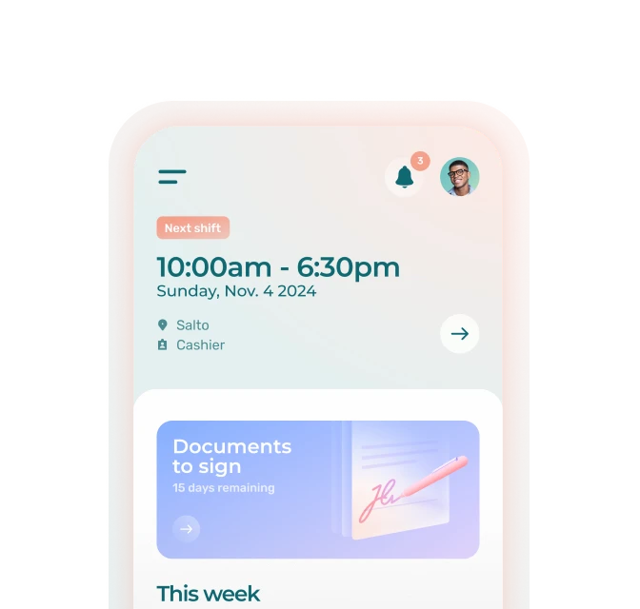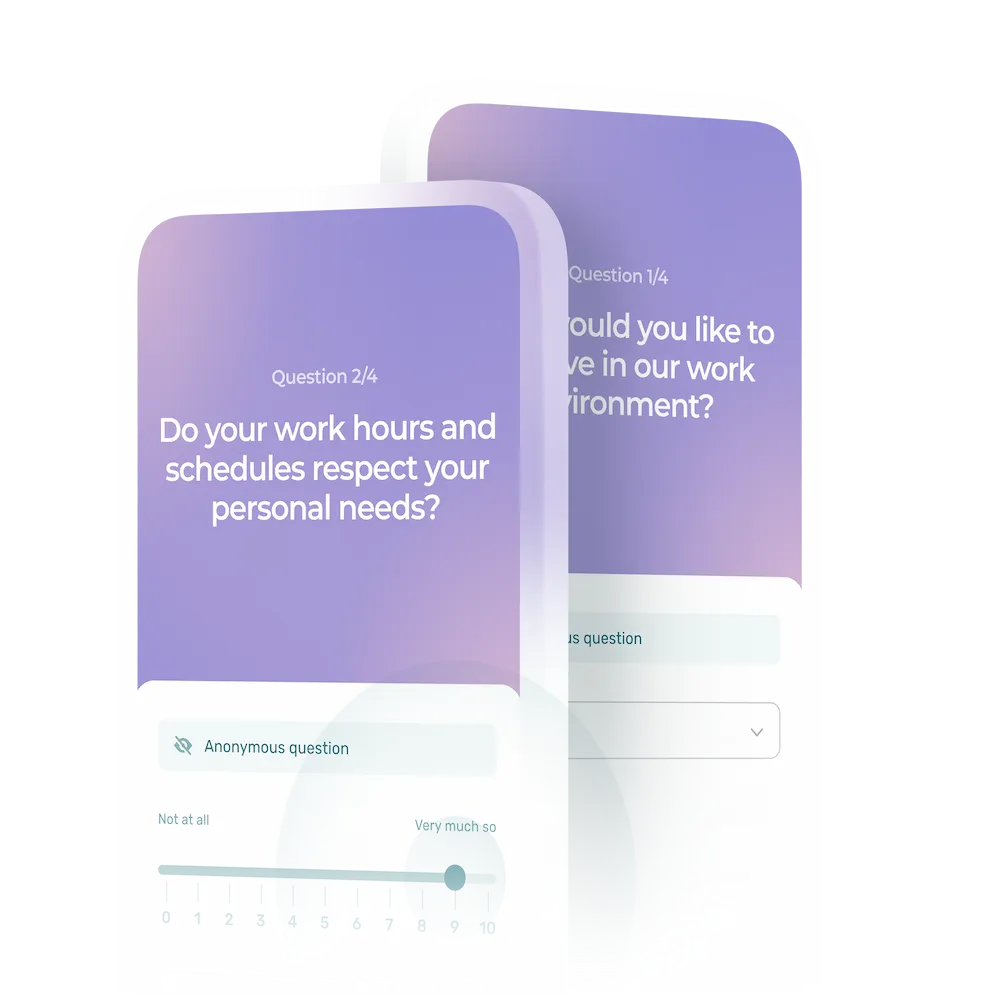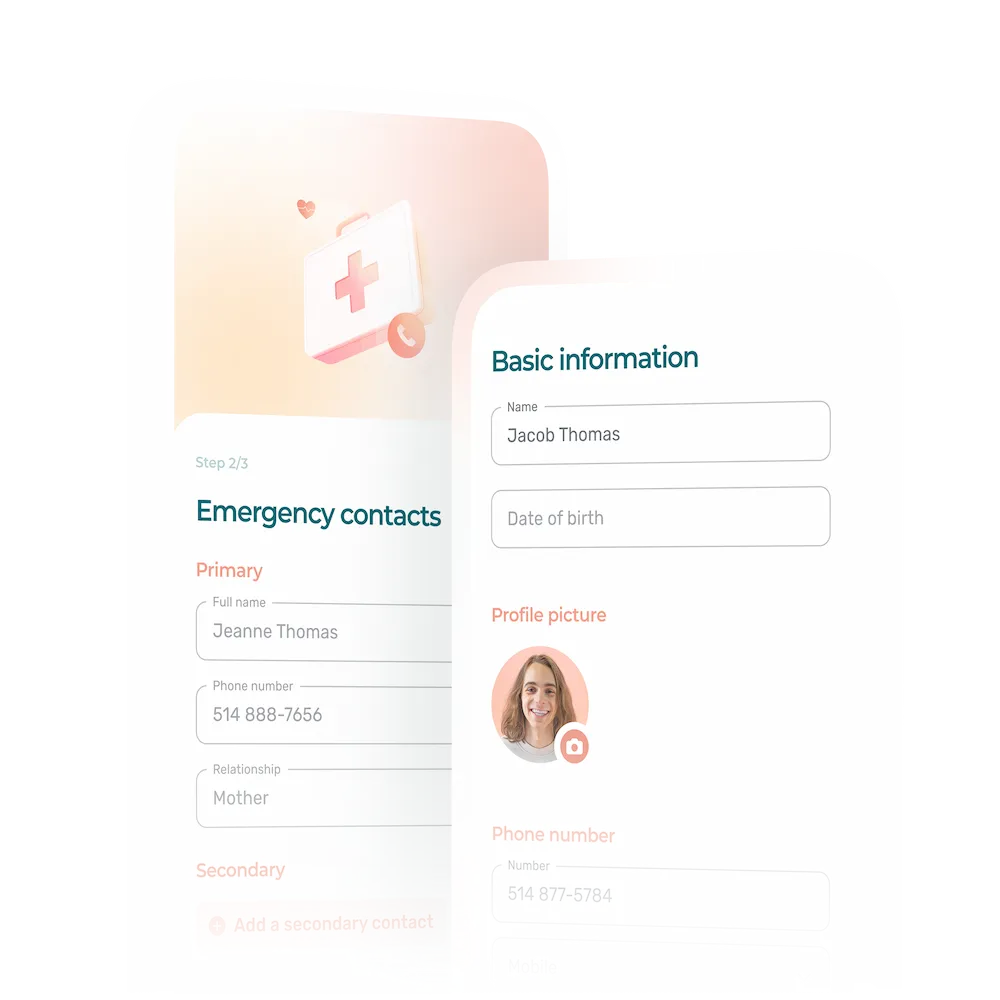Need help with talent retention? Discover top small businesses employee retention strategies for 2025!
See the best methods to attract and keep employees. Get tips on how to create a supportive work environment and foster a strong company culture so that your team feels valued and motivated to stay.
Key Takeaways
- Attracting and retaining top talent enhances productivity and innovation, directly boosting a business’s profitability and competitive advantage.
- Talent retention is an ongoing challenge for many small businesses, with limited resources to attract and retain employees with advantageous compensation packages.
- Poor compensation and benefits are strongly linked to high employee turnover rates.
- Low employee attendance and productivity may be indicators of a low talent retention rate.
- High staff turnover is associated with increased costs, lost productivity, and poor customer service.
- There are low-cost talent retention strategies and tools businesses can use to attract and retain top talent.
What Is Talent Retention?
Talent retention refers to an organization’s ability to retain employees and reduce staff turnover. It involves strategies and practices that ensure employees feel valued, engaged, and satisfied with their work environment. The goal of talent retention is to not simply keep employees, but to retain the best employees to support the company’s growth.
Why Should Small Businesses Measure Employee Retention?
Measuring talent retention helps businesses identify issues that lead to employee turnover. This knowledge can be used by small business owners to develop more effective employee retention and engagement strategies to reduce recruitment and training costs.
Cost of Employee Turnover for a Small Business
Employee turnover can be costly for a small business:
- 50% to 60% of an employee’s annual salary for hourly workers, according to the Society for Human Resource Management (SHRM).
- 20% of the employee’s annual salary for salaried positions earning less than $50,000 per year, according to a Center for American Progress study.
This cost includes expenses related to recruitment, hiring, onboarding, training, and lost productivity during the transition period. This cost can be even higher for higher-level positions or those requiring specialized skills.
Poor talent retention also creates other related costs:
- Decreased morale among remaining employees
- Decreased productivity and potential negative impacts on customer service and client relationships
The bottom line is, the higher the staff turnover in your small business, the more susceptible you are to incur increased costs.
How Can Small Businesses Improve Talent Retention?
A recent Oracle study confirmed a hunch most of us have: poor compensation and benefits are strongly linked to high employee turnover rates.
So how can a small business with limited resources minimize turnover costs and maintain a stable workforce? By implementing effective retention strategies and investing in employee engagement and development.
8 Metrics to Measure Employee Retention
Below are some of the metrics that can be used to measure SMB talent retention effectively. The target rates are provided as a general benchmark and may not apply to all small businesses, depending on a number of factors, such as industry, geographic location, etc.
1. Employee Retention Rate
- How it works: Calculates the percentage of employees who remain with the company over a specified time period.
- Formula: (Number of employees at end of period / Number of employees at start of period) × 100.
- What it tells you: Overall retention trends and if there are any periods with high turnover.
- Target: Aim for a retention rate of 85-90% annually.
2. Turnover Rate
- How it works: Measures the percentage of employees who leave the company during a specific period.
- Formula: (Number of employees who left / Average number of employees) × 100.
- What it tells you: If there are specific times when turnover spikes, which can indicate underlying issues.
- Target: Strive for an employee turnover rate below 10-15% annually.
3. Average Tenure
- How it works: Calculates the average length of time employees stay with the company.
- Formula: Total years of service of all employees / Number of employees.
- What it tells you: How long employees typically stay, indicating overall job satisfaction and engagement.
- Target: Aim for an average tenure of 3-5 years.
4. New Hire Retention Rate
- How it works: Measures the percentage of new employees who stay with the company for a specified period (e.g., one year).
- Formula: (Number of new hires who stay / Number of new hires) × 100.
- What it tells you: If your recruitment and onboarding processes are effective.
- Target: Target a new hire retention rate of at least 70-80% after the first year.
5. Exit Interview Feedback
- How it works: Part of any good offboarding process, exit interviews gather qualitative data from departing employees about their reasons for leaving.
- What it tells you: If there are any common themes or areas for improvement to prevent future turnover.
- Target: Regularly conduct exit interviews with a goal of identifying actionable feedback in at least 80% of cases.
6. Employee Satisfaction Surveys
- How it works: Asks employees, through regular surveys, about their job satisfaction, engagement, and any issues they face.
- Formula:
- Design a survey with several questions related to various aspects of job satisfaction, using a Likert scale (e.g., 1 to 5, where 1 = very dissatisfied and 5 = very satisfied).
- Calculate the average score for each question: (∑Scores for the Question / Number of Responses)
- Calculate the overall employee satisfaction score: (∑Average scores of all questions / Total Number of Questions)
- What it tells you: What issues and concerns your employees have so that you can proactively address them before they lead to poor workplace morale and high employee turnover.
- Target: Aim for an employee satisfaction score of 70% or higher.
7. Internal Mobility Rate
- How it works: Measures the percentage of employees who are promoted or move to different roles within the company.
- Formula: (Number of internal moves / Total number of employees) × 100.
- What it tells you: What career development opportunities exist within the company so that you can provide growth paths to help retain talent.
- Target: Strive for an internal mobility rate of 10-15% annually.
8. Time to Fill
- How it works: Measures the average time taken to fill vacant positions.
- What it tells you: If your hiring processes are efficient and how vacancies may be affecting employee workload and morale.
- Target: Aim to fill positions within 30-45 days on average.
Small businesses should regularly monitor these metrics to gain valuable insights into their talent retention efforts and make data-driven decisions to improve their workplace environment.
Did you know?
Low employee attendance and low employee retention are related, often influencing each other in several ways. See how to track employee time & attendance.
8 Tools to Measure Talent Retention
Small businesses can use a variety of tools to measure employee retention. Here are some key tools, along with their benefits:
1. Agendrix HR Software for Small Businesses
- User-friendly all-in-one scheduling and HR+ management software.
- Can be used to onboard employees, centralize employee records, collect feedback through surveys, and highlight good work.
- Software’s Plus plan offers detailed turnover reports that help identify trends and patterns in employee departures.
- Gives small businesses valuable insights into why employees leave allow small businesses to address specific issues and improve retention strategies.
2. BambooHR
- HR management solution with detailed analytics on employee turnover, retention rates, and tenure.
- Intuitive dashboards and customizable reports help small businesses track retention metrics effectively and identify areas for improvement.
3. Zoho People
- HR management tool with features like employee databases, performance reviews, and detailed retention metrics.
- Helps small businesses automate HR processes and gain insights into employee satisfaction and retention.
4. Workday
- HR and financial management solution, including retention analysis.
- Analytics help businesses understand turnover trends and develop strategies to enhance talent retention.
5. Gusto
- Payroll and HR management tool with employee lifecycle tracking, and retention metrics.
- Reporting features help small businesses monitor retention rates and improve employee engagement.
6. Qualtrics Employee Experience
- Survey tool to measure employee engagement and satisfaction.
- Enables businesses to identify factors contributing to turnover and implement targeted retention strategies.
7. Trello
- Project management tool that can be adapted to track employee satisfaction and engagement through customizable boards and cards.
- Helps small businesses keep an eye on team morale and address issues promptly.
8. 15Five
- Focuses on continuous performance management and employee engagement.
- Includes tools for conducting regular check-ins, setting goals, and gathering feedback to understand and improve retention.
Retention Benchmarks Across Different Industries
Below are some common talent retention benchmarks used in various industries. Keep in mind that these benchmarks may vary for your small business based on its location, market positioning, and the specific roles within each industry.
Retail
Retention benchmark often used in the Retail industry: Average turnover rate for retail employees within a year.
Pharmacy
Retention benchmark often used in the Pharmacy industry: Percentage of pharmacy technicians and pharmacists retained over a specific period.
Construction
Retention benchmark often used in the Construction industry: Average tenure of construction workers or turnover rate within a construction company.
Restaurants & Bars
Retention benchmark often used in the Restaurant & bar industry: Annual turnover rate for restaurant staff.
Hotels & Hospitality
Retention benchmark often used in the Hotel & hospitality industry: Average turnover rate for hotel staff per year.
Events & Recreation
Retention benchmark often used in the Events & recreation industry: Percentage of event staff retained seasonally or annually.
Seasonal & Tourism
Retention benchmark often used in the Seasonal & tourism industry: Retention rate of seasonal workers in tourism-related roles.
Cleaning Services
Retention benchmark often used in the Cleaning services industry: Annual turnover rate for cleaning staff.
Catering
Retention benchmark often used in the Catering industry: Percentage of catering staff retained over a year.
Healthcare
Retention benchmark often used in the Healthcare industry: Average turnover rate for nurses, doctors, and other healthcare professionals.
Offices & Call Centers
Retention benchmark often used in the Offices & call center industry: Annual turnover rate for office employees or call center agents.
Home Care
Retention benchmark often used in the Home care industry: Retention rate of caregivers and home health aides.
Security Services
Retention benchmark often used in the Security services industry: Average tenure or turnover rate for security guards.
Cities & Municipalities
Retention benchmark often used by Cities & municipalities: Employee retention rate within local government entities.
20 Talent Retention Strategies for Small Businesses for 2025
In 2025, small businesses should strive to create an environment where employees are motivated to stay with the company for the long term. A proven way of achieving this is by implementing employee retention strategies.
When done right, the following talent retention strategies can help your small business reduce turnover rates and increase talent retention.
Below are some common talent retention strategies. Bear in mind that you probably won’t be able to implement them all at once. Start with one or two strategies that make a quick and easy fit at your small business and then consider adding more over time until you have reached a good employee retention rate.
- Competitive compensation packages: Offer salaries and benefits that match or exceed industry standards to attract and retain top talent.
- Flexible work arrangements: Provide options for remote work, flexible hours, or compressed workweeks to accommodate employees’ diverse needs.
- Professional development opportunities: Invest in employee training, workshops, conferences, and certifications to support employees’ career growth.
- Clear career pathways: Establish transparent promotion paths and offer opportunities for advancement within your small business.
- Mentorship programs: Pair experienced employees with newer hires to facilitate learning, networking, and skill development.
- Regular feedback and recognition: Provide employees with constructive feedback and acknowledge employee contributions through regular performance reviews and employee recognition programs.
- Work-life balance initiatives: Promote initiatives like wellness programs, mental health days, and encouraging employees to take time off when needed.
- Employee resource groups (ERGs): Create communities within the organization based on shared identities, interests, or experiences to foster inclusivity and support.
- Transparent communication: Keep employees informed about company goals, decisions, and changes through regular updates and town hall meetings.
- Employee assistance programs (EAPs): Offer resources and support for employees dealing with personal or professional challenges.
- Promoting diversity and inclusion: Actively foster an inclusive workplace culture that values diversity in all its forms.
- Team building activities: Organize team-building exercises, retreats, and social events to strengthen relationships and morale.
- Wellness initiatives: Provide access to wellness benefits such as gym memberships, meditation apps, or onsite fitness classes.
- Community engagement: Encourage employees to participate in volunteering activities and community outreach programs.
- Cross-training opportunities: Offer opportunities for employees to learn new skills and explore different roles within the organization.
- Performance-based incentives: Implement performance-based bonuses, profit-sharing, or stock options to reward high achievers.
- Supportive leadership: Foster a culture of trust, respect, and empathy among leaders and managers.
- Workplace flexibility technology: Leveraging technology tools and platforms to streamline remote work, communication, and collaboration.
- Regular check-ins: Conducting regular one-on-one meetings between employees and managers to discuss goals, progress, and concerns.
- Exit interviews and feedback loops: Conducting exit interviews to gather feedback from departing employees and using this information to improve retention strategies.
Download now: Free Exit Interview Template
See more on how to calculate and improve your employee retention rate
Parting Thoughts on Small Business Employee Retention
Implementing employee retention best practices doesn’t need to be complex or an all-at-once effort. Start by measuring key employee retention metrics at your small business, survey your staff on their employee experience, and look for ways to address any issues they raise. Then conduct follow-up surveys to verify if your efforts are having the desired impact.
And don’t forget to measure talent retention metrics and other key HR performance indicators regularly. There are many HR management tools to make the process easy, including Agendrix HR software for small businesses.
How Will Improving Talent Retention Help my Small Business?
Improving employee retention can benefit a small business in several ways:
- Cost savings: Reducing turnover can save a small business significant costs associated with recruiting, hiring, and training new employees.
- Increased productivity: Retaining experienced employees who are familiar with the company’s processes and culture can lead to higher productivity levels.
- Enhanced reputation: A reputation for being a great place to work can attract top talent and improve the company’s brand image.
- Better customer service: Satisfied, engaged employees are more likely to deliver excellent customer service, leading to higher customer satisfaction and loyalty.
- Innovation and growth: A stable workforce fosters a culture of innovation and continuous improvement, driving business growth and success over the long term.
How Can I Identify the Factors Contributing to Employee Turnover in my Small Business?
Conduct exit interviews with departing employees to gather feedback on their reasons for leaving. Additionally, regularly survey employees to understand their level of job satisfaction, engagement, and any concerns they may have.
What Are Some Cost-Effective Ways to Improve Employee Retention in my Small Business?
Offer non-monetary benefits such as flexible work arrangements, opportunities for professional development and advancement, and a positive work culture that values work-life balance. Regularly recognize and reward employees for their contributions.
How Can I Create a Supportive Work Environment that Encourages Employee Loyalty?
Foster open communication by soliciting feedback from employees, addressing their concerns, and involving them in decision-making processes when possible. Promote a culture of appreciation and recognition, where employees feel valued and supported by their managers and peers.
What Role Does Leadership Play in Talent Retention, and How Can I Improve As a Leader to Retain my Team?
Lead by example by demonstrating integrity, empathy, and transparency in your interactions with employees. Provide regular feedback, coaching, and mentorship to help employees grow and develop in their roles. Invest in leadership training and development programs for yourself and other managers to enhance your leadership skills.
How Can I Measure the Effectiveness of my Employee Retention Efforts and Track Improvements Over Time?
Establish key performance indicators (KPIs) related to talent retention, such as turnover rates, employee engagement scores, and employee satisfaction levels. Regularly track and analyze these metrics to evaluate the impact of your retention strategies and identify areas for improvement. Adjust your approach based on feedback and results to continuously enhance employee retention in your small business.










